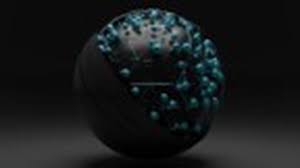Nitrogen-9 nucleus : Discovery

Scientists discovered hints of the new isotope, called nitrogen-9, by smashing beams of oxygen isotopes into beryllium atoms in the U.S. National Superconducting Cyclotron Laboratory.
- Nitrogen-9 nucleus is characterised by seven protons and two neutrons – which is an unusually high proton-to-neutron ratio.
- This disparity has a critical effect on the isotope’s stability, influencing its decay processes as well as overall behaviour.
- For one, the high proton content places nitrogen-9 atoms beyond the conventional stability thresholds.
- Most nitrogen comes as the isotope nitrogen-14, with seven protons and seven neutrons. But physicists say they have glimpsed a far more elusive variant with just two neutrons.
- Isotopes are atoms of a given element that vary only in the number of neutrons. This difference sets apart one isotope from another.
- Many isotopes are also unstable, especially those whose atoms have too few neutrons for the number of protons.
- Unstable isotopes are short-lived, and often decay by releasing some energy to achieve a more stable configuration.




